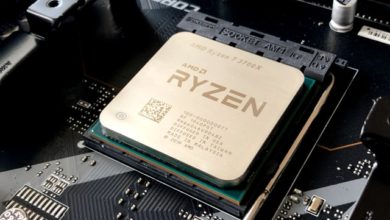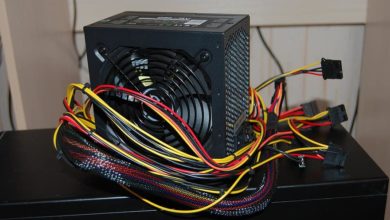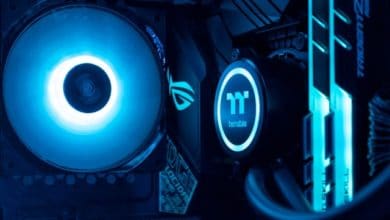BEST 240Hz MONITOR
The refresh rate of a monitor is one of the most crucial factors to consider, particularly if you want to use it for the purpose of gaming. A monitor’s refresh rate refers to its capacity to update the image on the screen once per second. 60 Hz was once the industry norm for all sorts of applications, including entertainment and gaming. On the other hand, high refresh rate displays have become the new standard for practically all desktop users since they provide a significantly smoother output and a competitive edge in games. Aside from the high refresh rate, there are a few other considerations to evaluate while purchasing a gaming monitor.
Display Resolution: The latest generation of graphics cards can deliver high frames per second for most games, even at greater resolutions. As a result, if your graphics card is suitable for supporting it, you should consider purchasing a high-resolution display. Higher resolution displays, on the whole, guarantee a significantly clearer image, as well as greater sharpness and color accuracy.
Screen Size: The total screen size of a desktop monitor is also crucial. Unlike televisions, monitors are typically placed near to the user. Therefore, the screen size should be appropriate. While a bigger display does provide a better viewing experience, you must only use it if you are able to adjust to a corresponding longer viewing distance. On the other hand, a tiny display is recommended by many professional competitive gamers for greater attention.
Panel Style: Including a refresh rate and high resolution, the type of panel used on display should also be considered. While other aspects affect the monitor’s capabilities, the panel type indicates the overall image quality you’ll get from it. IPS panels are the finest choice for a wide range of applications. If you’re searching for a budget-friendly solution, though, VA panels are a good choice.
Advantages Of 240Hz Monitors
Given that the refresh rate primarily controls the highest FPS that a monitor can display, the benefits of increased refresh rates are practically the same as the benefits of high framerates.
Keeping that in mind, here are the main benefits of high refresh rates: Enhanced responsiveness as well as a smoother gameplay experience, with less motion blur. In multiplayer that is competitive, there is the possibility of somewhat faster reaction times.
Suffice to say, these are considered two significant benefits for numerous gamers, especially those who like competitive multiplayer, in which a fraction of a second might mean the difference between victory and defeat. On the other hand, high refresh rates have significant disadvantages, which we’ll discuss below.
Disadvantages Of 240Hz Monitors
240Hz displays, like 144Hz monitors, must make several compromises in order to achieve such extreme refresh rates.
Even though TN panels aren’t as prominent as they once were, they still account for a significant share of the 240Hz gaming monitors on the market due to their low cost and excellent performance in terms of response times and refresh rates.
However, because this panel technology is often connected with poor color viewing ad reproduction angles, acquiring a TN-equipped monitor typically means sacrificing visuals in exchange for performance.
Among the numerous causes for the TN panel’s decline is that IPS panels have been mostly able to catch up and perform far better compared to how they did just a few years back. Fundamentally, they provide much improved colors and visual angles while also being more inexpensive, even when it comes to 240Hz panels.
However, not all IPS panels are made equal, so while there are some reasonably priced 240Hz IPS displays on the market, you’ll need to pay a little more if you want the “whole set,” i.e., a monitor that covers both visual fronts and performance.
Lastly, we possess VA panels, which sort of strike a balance in all of this. They feature greater viewing angles and color reproduction than TN panels, but this panel technology is infamous for ghosting and long reaction times, which is the reason why 240Hz VA monitors are not as famous as IPS monitors.
Then there’s the issue of the framerates themselves. There is absolutely no doubt in the fact that the framerates who are higher are able to deliver a gaming experience that is more responsive and smooth, but as previously noted, there are certainly other variables to consider.
First and foremost, the higher the framerates go, the more difficult it becomes for the naked eye to distinguish between them.
While distinguishing between 30 and 60 frames per second and 60 and 144 frames per second is rather simple, distinguishing between 144 and 240 frames per second is much more challenging. Granted, it is a significant improvement in functionality; however, as the clip above shows, many people can’t detect the difference until or unless they compare a 240Hz panel to a 144Hz monitor side by side.
Furthermore, there is the issue of resolution—the vast majority of 240Hz displays are even now 1080p; thus, acquiring one would almost certainly mean compromising on visuals in favor of performance.
There is no need to say; there are some gamers who are happy with this and would rather have more frames than more pixels at any time of any day of the week, while other people would not consider the performance boost worthy of the visual quality provided by 4K or 1440p.
However, although high-quality resolution 240Hz displays are available, they are also more expensive, so depending on your goals, a 144Hz 1440p monitor or even a 60Hz 4K monitor may be a better match.
Finally, you’d want a graphics card capable of pushing such high framerates.
Numerous gamers consider speeding a crucial feature in esports, particularly in competitive gaming, where a high refresh rate is frequently regarded more significant than size or resolution since it allows for fluid gameplay and perhaps provides them with an edge over their less-equipped opponents. Users like to go larger every now and again. There do not exist many monitors that have a 240Hz refresh rate, and most of them use TN panels, while IPS panels are beginning to surface. Every frame is totally sharp and clear unsold and has fluid animations on these displays with incredibly rapid refresh rates.
Our top picks
Dell S2522HG
About The Monitor
The Dell S2522HG is a $250-$280 25-inch 1080p 240Hz IPS gaming monitor. It’s among the most affordable 240Hz monitors on the market, but it delivers very smooth performance as well as excellent image quality.
Image Quality
The Dell S2522HG boasts 178° broad display angles due to the IPS screen, which means the picture probably won’t change in brightness, color, gamma, or contrast when seen from skewed angles. Higher resolution displays, on the whole, guarantee a significantly clearer image, as well as greater sharpness and color accuracy.
Furthermore, the colors are uniform and realistic throughout the whole screen. Because the monitor covers the whole sRGB color space, you may utilize it for professional color-critical tasks that involve the sRGB gamut, provided you own a colorimeter.
Most notably, the Dell S2522HG boasts a quick 1ms GtG pixel response time, ensuring that rapidly-moving objects are not apparent ghosted.
Features
The S2522HG supports AMD FreeSync with a 48-240Hz VRR (variable refresh rate) range for tear-free gameplay.
This method synchronizes the refresh rate of the display alongside the frame rate of the GPU. Therefore, if you’re hitting approximately 144FPS, the screen will automatically shift its refresh rate to 144Hz, eliminating stuttering and tearing with no discernible input latency penalty. Unfortunately, the S2522HG lacks additional Motion Blur Reduction (MBR), which uses backlight strobing to decrease apparent motion distortion at the expense of the picture’s brightness. MBR also introduces screen flickering. Although flicker is invisible to the naked eye, people vulnerable to it may develop eye strain or headaches after extended use. Dark Stabiliser (which increases clarity in darker games) and different pre-calibrated image settings are also included.
Pros
- The response speed is quick, and input latency is minimal.
- There are many gaming features, such as FreeSync up to 240Hz.
- USB hub and fully ergonomic stand
- Colorful graphics and a broad range of viewing angles
Cons
- There is no MBR.
- Poor contrast ratio and IPS glow (as expected from this panel technology)
BenQ XL2546K
About The Monitor
Professional players and numerous eSports competitions frequently use BenQ’s Zowie gaming monitors, as there are strong grounds for that.
Features
Compared to IPS panels, the BenQ XL2546K uses a TN screen, with worse narrower display angles and image quality. But, then for what reason is the XL2546K nearly twice as expensive as the Dell S2522HG?
It’s mostly because of its unique gaming features, particularly the DyAc+ (Dynamic Accuracy Plus) backlight strobing technology. This approach of Motion Blur Reduction is far superior to that of most displays. To begin with, it offers a modest image brightness toll that allows you to experience a dazzling picture quality.
Second, strobe crosstalk is limited up to 180Hz strobed; thus, there will be no noticeable double images or other distractions. Because of the lack of blurriness of motion, lagging, and overshoot, as well as reduced input latency, the XL2546K mimics CRT screens in terms of motion clarity. Prominent gaming characteristics comprise the S. Switch device, which lets users change display settings remotely, Black equalizer (which increases transparency in darker surroundings), FreeSync up to 240Hz, and Color Vibrance (color saturation presets). The ‘XL Setting to Share’ tool also enables users to import and export the monitor’s settings quickly.
Pros
- Fast reaction speed and little input latency
- Maximum to 240Hz MBR and AMD FreeSync
- Perfection in MBR installation
- S. Switch, as well as the darkening hood, are two additional gameplay features.
- USB hub and fully ergonomic stand
Cons
- Image quality is inferior to that of IPS/VA screens.
- Restrictive viewing angles
- It is costly.
ViewSonic XG2431
About The Monitor
For such PureXP backlight flashing strobe technology, the ViewSonic XG2431 was the 1st gaming monitor to gain the Blur Busters Approved 2.0 accreditation, implying greater performance, firmware upgrades, and more.
Image Quality
A 400-nit maximum brightness, 1,000:1 static contrast ratio, 8-bit color depth compatibility, 1ms GtG reaction time speed, as well as the conventional sRGB color gamut are among the panel’s features.
As a result, the watching experience is identical to that of comparable 24′′ 1080p 240Hz IPS gaming displays. Things start to become intriguing when you experience its flawless MBR performance.
Features
The ViewSonic XG2431 delivers steady VRR operation with NVIDIA GPUs and endorses AMD FreeSync with a range of 48-240Hz VRR. Other basic gaming characteristics include pre-calibrated image settings as well as Black Stabilization (for better transparency in darker games).
Its key characteristic includes the Blur Busters-approved as well as pre-tuned PureXP backlight flashing strobe technology, which popularised and helped create Motion Blur Reduction in gaming displays. On 240Hz monitors, backlight strobing is most effective when the screen is set between 100Hz and 144Hz, because there is fewer strobe crosstalk (double images) compared to when the screen is set at 240Hz. It’s worth noting that a 240Hz monitor would function better at 144Hz in comparison to a 144Hz display strobing at 144Hz; thus, the monitor’s great refresh rate is not wasted. Comprising of a range of 48-240Hz VRR, the ViewSonic XG2431 supports AMD FreeSync and offers stable VRR with NVIDIA GPUs. Beforehand calibrated image presets and Black Stabilisation (for greater visibility in darker games) are two more common gaming features.
One of its important features is the Blur Busters-approved and pre-tuned PureXP backlight strobing technique, which pioneered and helped establish Motion Blur Reduction in gaming screens. Backlight flashing strobe on 240Hz displays works best when the display is set between 100Hz and 144Hz since there is less strobe interference (double images) than when the display is adjusted at 240Hz.
Pros
- Fast reaction speed and little input latency
- Up to 240Hz MBR and AMD FreeSync
- Perfection in MBR installation
- Additional features for gaming
- The stand is fully ergonomic.
- Bright colors and a broad range of viewing angles
Cons
- The IPS glows, and the dynamic range is terrible
Samsung G7
Image Quality
The resolution of 1440p on 27-inch displays gives a high screen resolution of 108 PPI, leading to clear text and detail, lots of display space, as well as no scaling. If you prefer the 32-inch model, note that 1440p on 32-inch monitors has the same screen resolution as 24-inch 1080p displays, so you’ll receive the identical amount of display area and information – but the quality of the image will be better as the screen is larger. Compared to TN and IPS displays, the Samsung G7 offers a remarkable static contrast ratio of 2,500:1, resulting in substantially deeper blacks. Best among all, in addition to its wide 95 percent DCI-P3 color gamut and vast 178° displaying angles, it also has a high brightness of 600 nits, resulting in far more realistic image quality. It is also among the few VA panel monitors with a lightning-quick 1ms GtG pixel response time. As a result, you won’t experience the smearing or ghosting common with VA screens.
Features
MBR is available, but the strobing isn’t properly tuned, as it is with all displays described in this article (excluding the ViewSonic XG2431 and the BenQ XL2546K) overdrive is limited to ‘Fastest,’ which is considered the most aggressive setting. With fast-moving multimedia, you’ll see multiple pictures only if you can sustain a steady 240FPS. Nevertheless, its GtG performance is excellent, so you won’t need MBR to play smoothly. The Samsung G7 is certified for both AMD’s FreeSync Premium Pro and NVIDIA’s G-SYNC Compatible. Basic gaming utilities like configurable crosshairs Black Equalizer enhance vision in dark games and pre-calibrated image settings.
Pros
- A high contrast ratio and a brilliant peak
- A wide color spectrum
- A plethora of capabilities, like FreeSync and MBR up to 240Hz, are included.
- Ergonomic stand with a wide range of connection options
Cons
- For some people, the 1000R curvature is too sharp.
- On some devices, the VRR Control feature may provoke micro-stuttering.
ASUS XG27AQM
Image Quality
The XG27AQM has an AUO quantum-dot augmented IPS panel with a broad 99 percent Adobe RGB gamut (150 percent sRGB) for vivid colors. If you want to see SDR content with realistic colors, there’s also a 100 percent sRGB clamp.
While the ASUS model has more vibrant colors as compared to the Samsung G7, it consists of a lower 1,000:1 contrast ratio, which means the blacks aren’t as deep.
It also consists of a lower peak brightness of 400 nits, which is more than sufficient for SDR material, but the HDR watching experience is less immersive. The XG27AQM features VESA’s DisplayHDR 400 entry-level certification.
Features
The 1ms pixel reaction time speed effectively eliminates all fast-moving objects that are trailed behind. You can also overclock the display to 270Hz and utilize FreeSync/G-SYNC Compatible for up to 270FPS tear-free gaming. There’s also ELMB-Sync, a strobing backlight technique that enables you to use MBR and VRR simultaneously. Various image settings, Shadow Boost, a refresh rate tracker, on-screen crosshairs and RGB lighting are among the other characteristics.
So, which one should you choose between the Samsung C27G75T and the ASUS XG27AQM? The most prominent distinction is between a flat and a curved screen, which is a matter of personal choice. The XG27AQM boasts more brilliant and consistent colors, broader seeing angles, and fluent VRR performance with a well optional illumination strobing technology. Although the Odyssey G7 features a better contrast ratio, no IPS glow, and for deeper blacks, significant gamma/saturation changes can be seen when watching the screen from certain angles owing to the shorter viewing angles. Furthermore, a changeable refresh rate can cause micro-stuttering based on the frame rate and game.
Pros
- Fast reaction speed and little input latency
- A lot of features, such as ELMB-Sync and FreeSync up to 270Hz.
- Fully adjustable stand with a wide range of connection options
- High pixel density and Adobe RGB gamut
Cons
- IPS panels emit a bluish light and have a lower contrast ratio than VA panels.
Acer XB323UGX
Image Quality
The XB323UGX is essentially a 32-inch version of the previously described XG27AQM, with a few notable exceptions. To begin, the 1440p quality results in a reduced pixel density on 32′′ displays; thus, the image on the XB323UGX will be less crisp, but the larger screen can provide a more intense gaming experience.
Features
Within the 48-240Hz dynamic range, both AMD’s FreeSync Premium and NVIDIA’s G-SYNC Compatible certifications offer variable refresh rates. You can elevate the display to 270Hz; however, VRR will not work in such a scenario. The XB323UGX, unlike the XG27AQM, does not include Motion Blur Reduction. Other features include crosshair and Black Boost overlays, ubiquitous in gaming.
Pros
- Fast reaction speed and little input latency
- A lot of features, such as FreeSync up to 240Hz.
- Fully adjustable stand with a wide range of connection options
- Adobe RGB color space
Cons
- IPS panels emit a bluish light and have a lower contrast ratio than VA panels.
Buyers Guide
If you’re in the market for a new screen, you’ll be able to choose from a wide range of brands. Because screen technology has progressed so far, there is a good alternative in practically every price range with appealing characteristics. As we evaluate the finest gaming monitors, we’ve narrowed down our choices to those that provide a 240 Hz refresh rate and a slew of other amazing features.
As a result, you’ll undoubtedly discover the ideal gaming screen for your system on our list. If you’re having trouble deciding which monitor is perfect for you, have a look at our shopping guide for the finest 240 Hz monitor on the market.
1. Screen Size
Before you buy a new monitor, one of the first things you should think about is its size. When it comes to installation and usage, the length of your display is really important. Larger displays are often advantageous for a range of uses, including productivity and enjoyment. However, many gamers prefer smaller displays since they provide a more immersive gaming experience as well as a variety of useful functions. If you don’t want to spend a lot of money on a huge display, you may buy a high refresh rate monitor with a greater resolution for a fair price. If you want to utilize the display for leisure games like couch gaming, though, you should absolutely choose a larger monitor.
2. Panel Type
Dissimilar to a TV, the screen panel is frequently overlooked when purchasing a monitor. The monitor’s panel type has an impact on the display’s overall quality. While it may not be significant for most reasons, it does have an impact on its overall game performance. The panel type also affects the reaction time and refresh rate depending on the option you select. As you may already be aware, these are among the most significant aspects to consider when it comes to gaming. Many serious gamers recommend getting a TN panel since it offers the fastest reaction time, advantageous in competitive gaming. HOWEVER, an IPS panel provides the finest viewing angles and visual quality, making it ideal for casual gaming. Check out any of the monitors on our list that include a VA panel if you’re searching for a compromise between these two alternatives. The VA panel has a high contrast ratio and acceptable viewing angles, idealizing desktop gaming. Even if you go for a budget-friendly version, a VA panel will provide you with some great features.
3. Display resolution
The resolution is also an essential consideration since it affects the entire image quality shown on the screen. You can only play the game at a certain resolution due to the display panel’s resolution. You’ll only be able to play games at 1080p quality if you get a Full HD 1080p display, but that’s still a decent value. Nevertheless, QHD 1440p resolution is the most recent gaming display standard. Given the capabilities of today’s graphics cards, you can easily get high FPS even in demanding games without losing game quality. However, at 1080p resolution, games like CSGO and Valorant, which benefit so much from high refresh rate monitors, you will almost surely obtain higher than 240 FPS.
As a result, we recommend a Full HD display for dedicated high-frame-rate competitive gaming and a QHD monitor for leisure single-player games. On a QHD panel, though, you may still obtain high FPS by playing games at a lesser resolution. However, if you do gaming at a lower resolution than the original resolution, the image will seem fuzzy on an elevated display.
4. Connectivity Options
Another issue that is sometimes overlooked when purchasing a monitor is the connectivity choices. However, because of the restricted possibilities, many customers will experience issues with connectivity in the future. As a result, we recommend extensively checking out the monitor’s connecting options to avoid any future issues.
Most monitors come with two or more ways to attach the display cords. There are DisplayPort and HDMI connectors on this device. You’ll be able to connect various devices to your display at the same time, and you’ll be able to swap the input signal from the OSD choices for faster access. Other connectivity options like audio connectors and USB ports are available on certain monitors, which are quite useful in everyday use. If you want to utilize the monitor, which has the newest generation consoles, do not forget to ensure that it contains one HDMI 2.1 connector. An HDMI 2.1 connector can output video in high resolutions like 4K and even 8K at 120 or 60 frames per second.
5. Extra Features
There also exist certain specialized gaming features, like FreeSync and G-Sync, that can be considered beneficial to gamers. These VRR technologies allow the monitor’s refresh rate to be adjusted in accordance with the graphics card’s rendering speed. Even if the produced FPS is 60 or below, it prevents screen tearing and provides a totally smooth video output.
You won’t have to employ in-game features like V-Sync, which harms FPS and creates input latency. Furthermore, new-generation consoles utilize FreeSync technology, allowing you to achieve desktop-like video output performance. HDR support has to be just another fantastic feature of gaming displays.
It is useful for entertainment and games material such as television shows and movies. The HDR capabilities provide vibrant color fidelity and increased brightness, enhancing the entire game experience.
Warranty
240 Hz displays are significantly more costly than standard computer monitors. As a result, you’ll want to make sure your 240 monitor lasts as long as feasible. Thankfully, practically all 240 Hz monitors come with a 3-year guarantee, which is excellent for long-term use.
FAQS
Does Xbox Series X/PS5 require G-Sync compatibility?
If you’re looking to purchase a monitor primarily for the purpose of console gaming, FreeSync compatibility is generally all you’ll need. On the other hand, almost every gaming monitor on the market supports both G-Sync and FreeSync technology. As a result, you may easily utilize the display for both desktops and consoles.
Is a 240 Hz refresh rate better than a 144 Hz refresh rate?
Simply mentioned, in general, a greater refresh rate has always been considered a better choice typically. A 240 Hz monitor will outperform a 140 Hz monitor, while a 360 Hz display will outperform a 240 Hz monitor. However, if the GPU can’t deliver equivalent high-quality performance, it is not a good idea to acquire a screen with a very fast refresh rate. A 240 Hz display, for example, will be a preferable option if your GPU only provides 100 to 150 FPS. If you have a top-of-the-line graphics card, such as the Nvidia RTX 3090, you should go for a display with a faster refresh rate.
How significant is reaction time on a gaming monitor?
The reaction time of a gaming monitor is a significant consideration since it indicates how responsive the display panel is. It’s simply the speed at which a pixel on your screen can change color. As a result, a monitor having a quicker reaction time will be updated faster, allowing you to offer much quicker input in relation to the monitor’s information. Even if the reaction time is measured in milliseconds, the distinction between a 5 ms and 0.5 ms display is noticeable.
Is a 240Hz display worthwhile for gaming, and is it a considerable upgrade from a 144Hz panel?
The distinction between 144 Hz and 240 Hz is difficult to discern with the naked eye. As a result, 240Hz panels are unlikely to resonate with ordinary people. However, if you are able to perceive the distinction and discover that it assists you in doing well in games or just causes them to be more fun, a 240Hz monitor will be definitely worth the investment. If not, a 144Hz monitor can provide you with all of the extra performance you want at a more affordable price and with superior aesthetics.
Conclusion:
Right present, there is a large range of displays accessible on the market, particularly when it pertains to gaming monitors. As a result, if you’re searching for a gaming monitor for the first time or an update for an existing one, you’ll discover plenty of alternatives that fit your budget. While shopping for a new display, a gaming monitor’s features and specs should not be overlooked, particularly the refresh rate. If you like the smoothness of high refresh rates more than the clarity of greater resolutions, and if your GPU is able to handle these high refresh rates in your primary games, a 240Hz might be worth it.
A 144Hz display, on the other hand, is expected to be a good fit for most individuals. It might be more inexpensive if you are on a limited budget, and a 144Hz 1440p monitor would be a fantastic medium ground that would cover you both visually and performance-wise.
But, of course, each gamer must answer this issue for oneself, and the more time you have to check out a 240Hz display, the better.
Many gamers want rapid refresh rates and response times for the purpose of competitive gaming. In this sense, a 240 HZ monitor gives and delivers an extraordinarily high leap. This increase can make a significant difference in your game performance. The majority of gamers are now using either 60 HZ or 144Hz displays.
A 240 Hz display has an extremely high refresh rate, resulting in a remarkably fluid gaming experience. Although it is not a monitor considered a must-have for casual players, it will provide potential competitive gamers with a significant advantage.
240hz displays provide two significant benefits due to their increased refresh rate.
- Higher refresh rates minimize motion blur when playing at a fast pace.
- This would also result in extremely fast response times, which would be noticeable in multiplayer games.
You should definitely check whether GPU you own has the ability to support a 240 Hz display before purchasing one. If it can’t, then your money is completely squandered. When you’re excited about the frame rate, you should conduct a benchmark to evaluate how the GPU you have operates.










